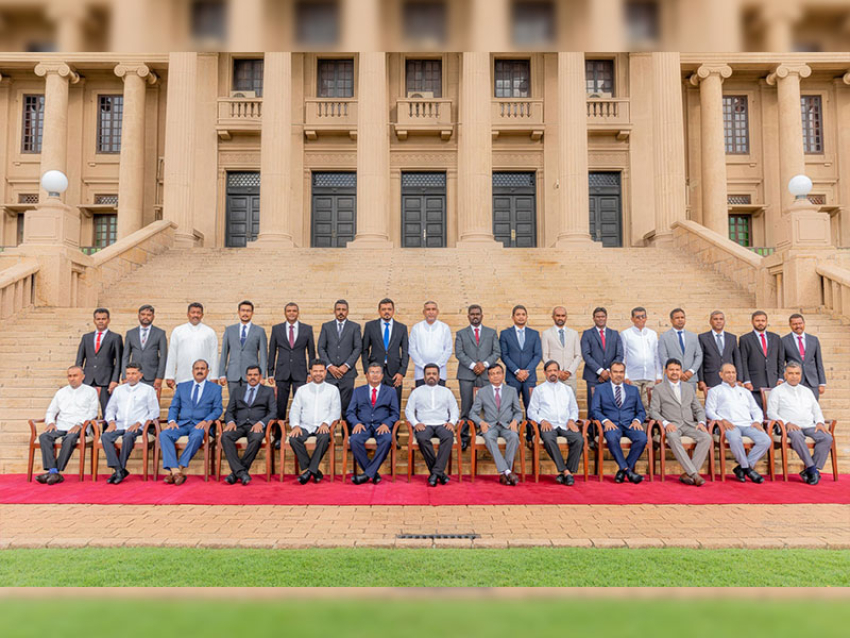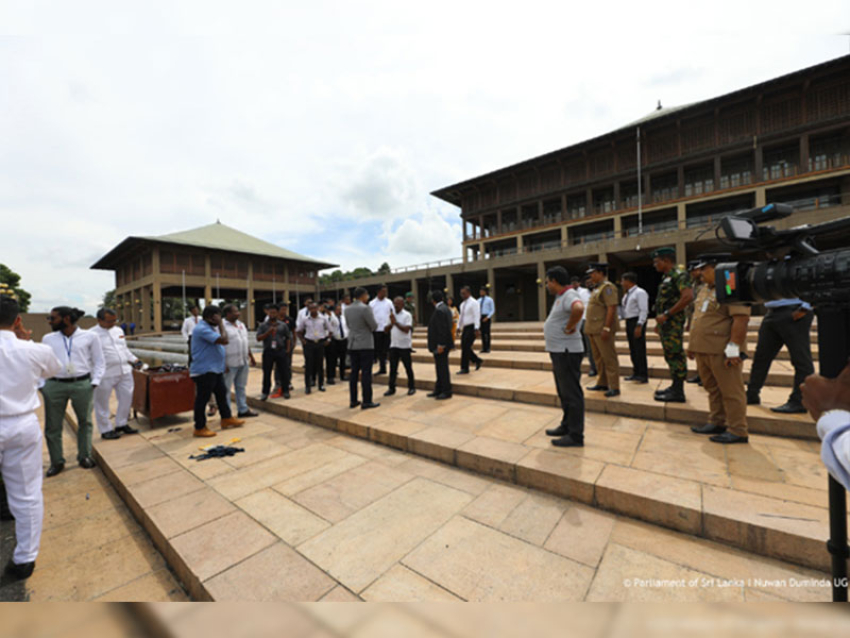Cruising at a speed of 22 knots patrol vessel SLNS Mihikatha (P-350) is a formidable force to be reckoned with. As she thrusts her way through the ocean the water foams and sprays on either side. Her gunners stand ready at her twin 12.7 mm main guns. Inside the wheel house the captain is busy giving orders to the navigation officer. The chief of the watch continues to instruct the sailors. This is another day of patrolling for this Bay Class vessel gifted to us by Australia. I went on board to observe her sailing routine and the tasks of her robust crew.
Maintaining watch
The officer commanding this vessel is Commander G.N.R. Wimalarathne who explained, “This vessel has a displacement of 132 tons. She has a length of 38.2 metres and a width of 7.2 metres and can reach speeds of 25 knots. We have a complement of 7 officers and 21 sailors. She has a cruising range of 2,400 nautical miles. She was commissioned on July 9, 2014”.Our first stop is at the topmost deck where her mast rises majestically to reflect the sunbeams. A sailor has just put up the ship’s call sign by visual signal using coloured pennants, attaching them to a white rope.Though technology has influenced every area of the vessel the traditional system of using pennants and flags remains a colourful and practical sailing custom.
Flags communicate the various stages of a voyage (to other ships) and are used even when entering and leaving harbour. The top most deck houses the vessel’s radar and communication antenna. On the deck below two lookouts are scanning the horizon using binoculars. Those familiar with sailing will understand the term ‘sea legs’- which denotes the ability to walk and stand on the outside deck, as the vessel pitches and rolls as the waves move her.
SLNS Mihikatha has a bit more pitch and roll as her body is fabricated with aluminum to give her greater speed - in comparison to an iron body. Accompanied by her Executive Officer Lt. Commander Isuru Hettiarachchi we descended some steps to the aft section (rear). On this platform the vessel has two boats that can be deployed by crane.This is the unique feature of this Bay Class vessel. While at deep sea coming into contact with hostile or suspicious boats, the captain can send these boats to investigate, keeping a safe distance.
Each boat can carry an armed six man crew and has a range of 150 nautical miles. The boats have GPS and all other sailing equipment. The boats often encounter fishing vessels that cross into our maritime boundary. Passing the crane we come to the end of the guard rail where a platform facilitates divers to enter the sea.The sun shines intensely as we climb down a hatch into the crew quarters. The captain and officers have individual cabins. The sailors’ cabins have twin bunk beds. All the washrooms have running hot water. The cabins are cozy yet it would take team spirit to live and work at sea.SLNS Mihikatha has a sea endurance of four days - meaning that she can be out at sea for this long.
The galley (ship’s kitchen) is always busy. The cook had just taken out a large tray of butter cake from the oven.The sweet aroma is welcome by all, as we indulge in this baked treat. An interesting thing to note in the galley is that the pots and pans are secured to the cooking burners by a bracket-like device - to stop them from moving as the vessel sails.
An officer said, ‘While sailing we adhere to food preparation that contains less liquid, as this prevents any hot spillage. All our curries are cooked in a thick consistency. Yet we have a choice of menus and the sailors enjoy their food’.We moved past the vessels armoury, and met the ship’s master.
The master is a senior sailor often holding the rank of Petty Officer. Master Jagath Wasantha explained, “My primary duty is to maintain discipline and ensure that the sailors carry out the captain’s orders. Our duty stations are marked on the vessel’s Watch & Station Bill. We regularly conduct drills as we sail, which include, fire fighting, damage control for flooding and MOB (man overboard drill if someone falls into the sea). We lay emphasis on safety drills and routines. Sailors have time to watch television when they finish their four hour watch.
They have to wash their clothes and clean their cabins. We begin the day with a muster (naval term for assembly) and sing the national anthem”. In addition to the supervisory duties, when entering and leaving harbour the master takes control of the wheel under the captain’s guidance.
Sailing to success
We climbed down a 90 degree ladder to the engine room. The engine room has two large 16 cylinder 1,050 kilowatt engines.This is the heart of the vessel which pumps and energizes every other department. Crewmen in dark blue overalls were busy going about their routines.
In addition there is a reverse osmosis plant that can suck in 2,000 litres of sea water and transform it into clean drinking water. By now the cook came in with a creative juice-chilled cucumber.This was most refreshing after being inside the somewhat hot engine room.
Another key member on any naval vessel is the Quarter Master. He has multiple tasks to perform on deck and is part of the gangway guard. While at harbour he signals the crew using the bosun’s pipe - a silver gadget that emits a long and sharp whistle.He also rings a large brass bell that signals the time and tea breaks. The brass bell was gleaming in the sunlight, an endorsement to cleanliness on board, as the brass could easily corrode in the salt laden breeze.As the sun set the men of the night watch take up position on board this guardian of the ocean’s domain.




















